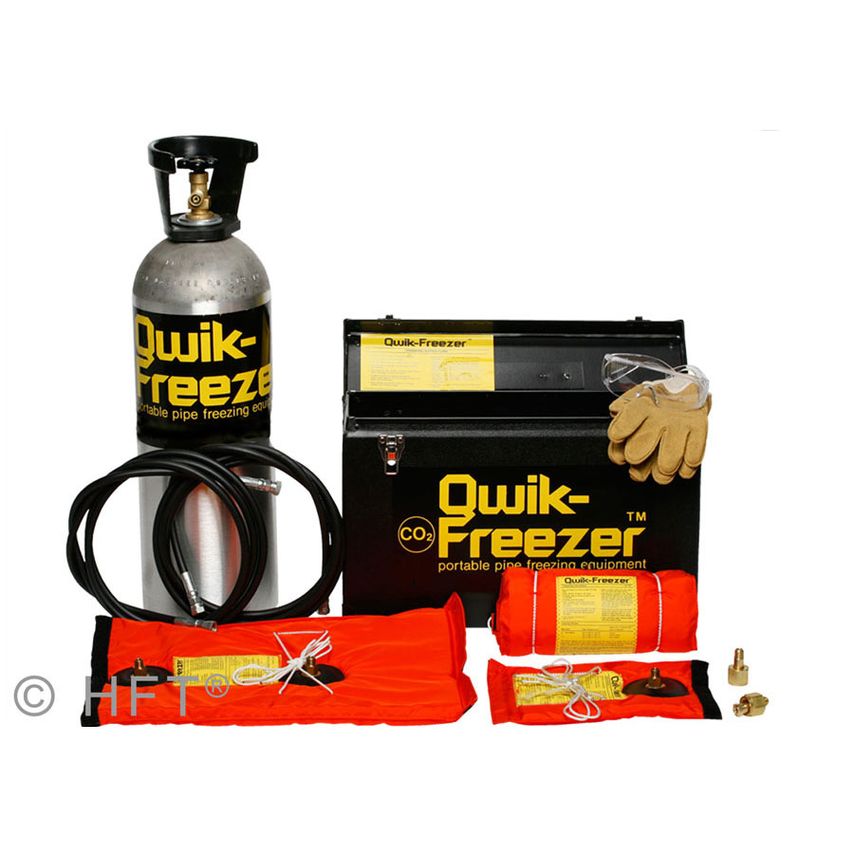Huntingdon Fusion Techniques Argweld Weld Trailing Shields - ATS300
The Argweld Weld Trailing Shields offer several benefits, including faster welding, cost savings, and the production of high-quality welds. These shields are designed with a stainless steel mesh body that allows argon gas to be evenly diffused without turbulence. Replaceable silicone rubber side shields prevent argon from escaping sideways, ensuring a continuous gas shield over the weld metal. This shield remains in place until the welded metal has cooled below its oxidation temperature.
The Argweld Weld Trailing Shields are reusable and can withstand temperatures up to 230C. They eliminate the need for expensive purge chambers, reduce re-work, and enable faster welding. They are suitable for welding a variety of metals, including titanium, zirconium, nickel, cobalt alloys, stainless and duplex steels, and other reactive metals.
These shields save costs by minimizing re-work and gas usage, avoiding rejected welds caused by oxidation. They are available in flat models for sheet or plate work and profiled models for welding internal and external pipes, vessels, and tanks.
When using Argweld Weld Trailing Shields, welds retain their brightness and shine without discoloration or oxidation, even at higher welding speeds. These shields are readily available for most popular sizes of pipes and vessels.
Features
- Sleek design and a unique torch holder for easy interchangeability of shield sizes without changing the welding torch.
- For right and left-handed use.
- Compatible with TIG, MIG, or Plasma welding torches.
- Provide excellent gas coverage when welding titanium, zirconium, cobalt alloys, duplex steels, stainless steels, and other reactive metals.
- Profiled shields are tailored to specific pipe, tube, vessel, or tank diameters.
- Flat shields available for plate, sheet, rectangular tanks, and fabrications.
- Suitable for both manual and machine-mounted torches, enabling faster welding with a reliable gas shield.
- Each shield undergoes testing to ensure perfect gas coverage, smooth movement, and no leaks.
- Manufactured in the UK according to European Standards and Quality Control Procedures.
Benefits
- Reduced gas consumption
- Avoidance of re-work
- Elimination of wasted material costs
- Prevention of rejected welds due to oxidation.
FAQs
1. What are the benefits of using an Argweld Weld Trailing Shields?
There are several reasons, some of which are:
A. The chance of a weld defect is dramatically reduced due to the wide gas coverage held over the weld for a longer period during welding, while the heated metal is cooling below the oxidation temperature.
B. Welds are finished in a bright and shiny condition, minimizing or eliminating post weld grinding and cleaning.
C. The heat affected zones of a weld are left clean when using an Argweld Weld Trailing Shields because of the extra wide gas coverage.
D. Welders can weld faster because of the extra time that the weld remains covered with inert gas when using an Argweld Weld Trailing Shields.
E. Significant reduction of manufacturing costs due to the reduction of post weld cleaning and the reduction of defects when using an Argweld Weld Trailing Shields.
2. Can I use Argweld Weld Trailing Shields for stainless steel as well as titanium and zirconium?
Yes, Argweld Weld Trailing Shields are extremely valuable for all stainless steel, duplex steel and other alloy steel as well as titanium, zirconium and all of the nickel and cobalt alloys.
3. Can I buy an Argweld Weld Trailing Shield which is longer or wider?
Yes. Argweld Weld Trailing Shields are designed for two methods of use:
A. For manual welding where they are light in weight and easy to manipulate by the manual welder when he has an Argweld Weld Trailing Shield attached to his welding torch.
B. For automatic welding machines. For automatic welding machines, where weight and size is less of a concern, Argweld Weld Trailing Shields are available in longer and wider dimensions to allow for much faster welding speeds and much hotter welds where greater gas coverage is necessary for obtaining clean defect free welds.
4. Can Argweld Weld Trailing Shields be used on any welding torch?
Argweld Weld Trailing Shields are designed and delivered with a universal worm drive circular clip that will open and close around any shield gas nozzle on any TIG (GTAW), MIG (GMAW) or Plasma (PAW) manual or machine torch.
5. Can I weld flat sheet and plate with Argweld Weld Trailing Shields?
Yes, one of the Argweld products is a flat Argweld Weld Trailing Shields which is available as an accessory for manual welding torches and another flat version for machine mounted welding torches.
6. Can I weld on the outside of pipes and vessels with Argweld Weld Trailing Shields?
Yes, Argweld Weld Trailing Shields are kept in stock for most popular sizes of pipes and vessels. Simply tell us the diameter of your pipe or vessel and we will provide an exact match.
7. Can I weld on the inside of pipes and vessels with Argweld
























